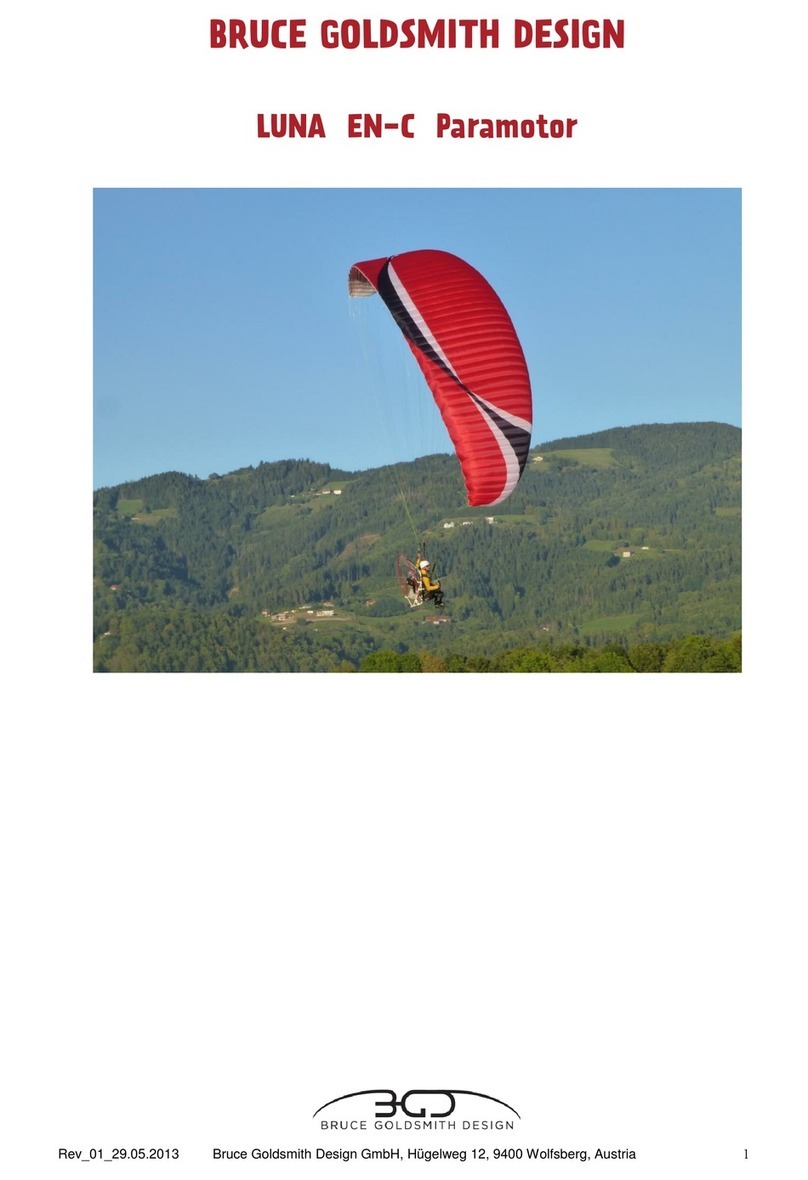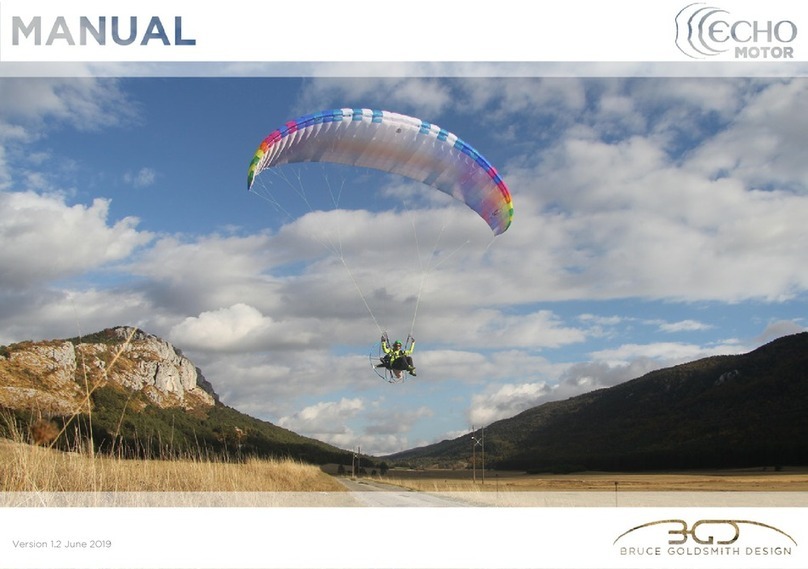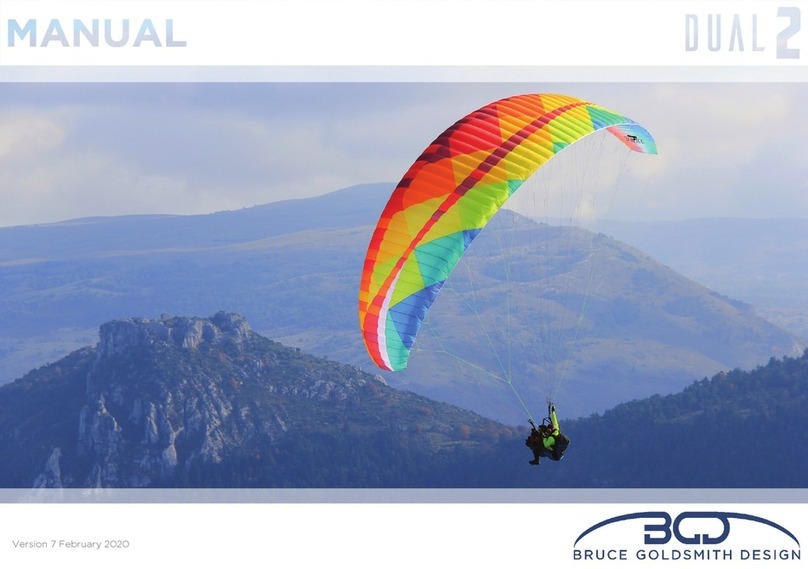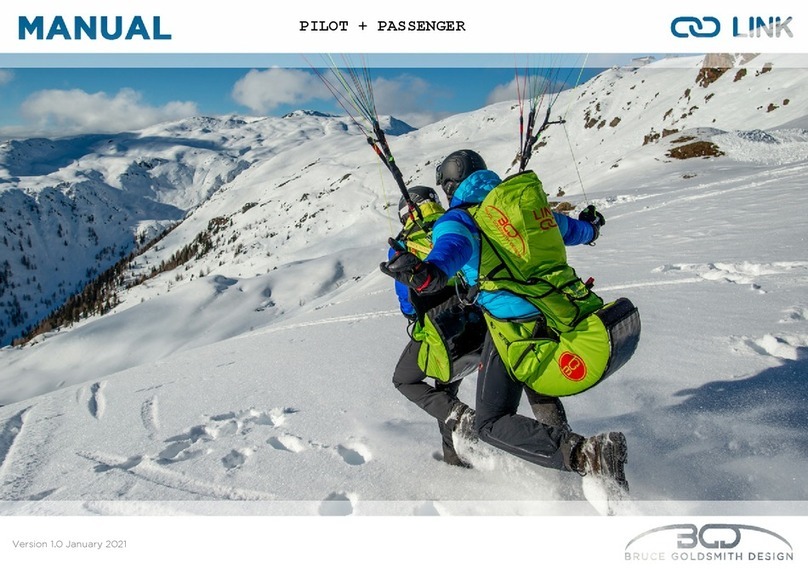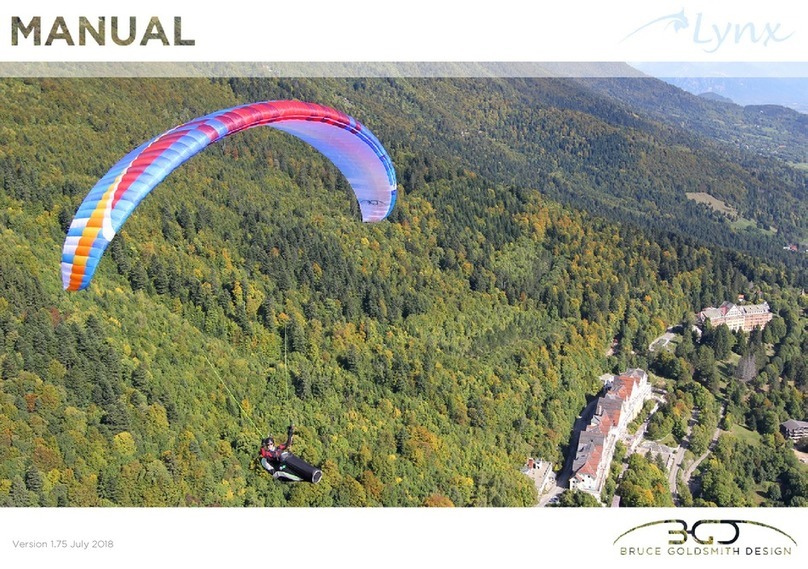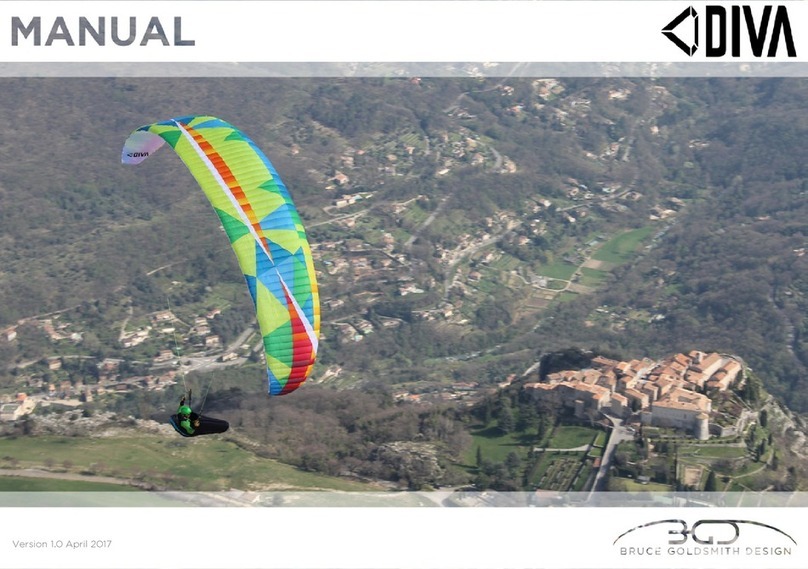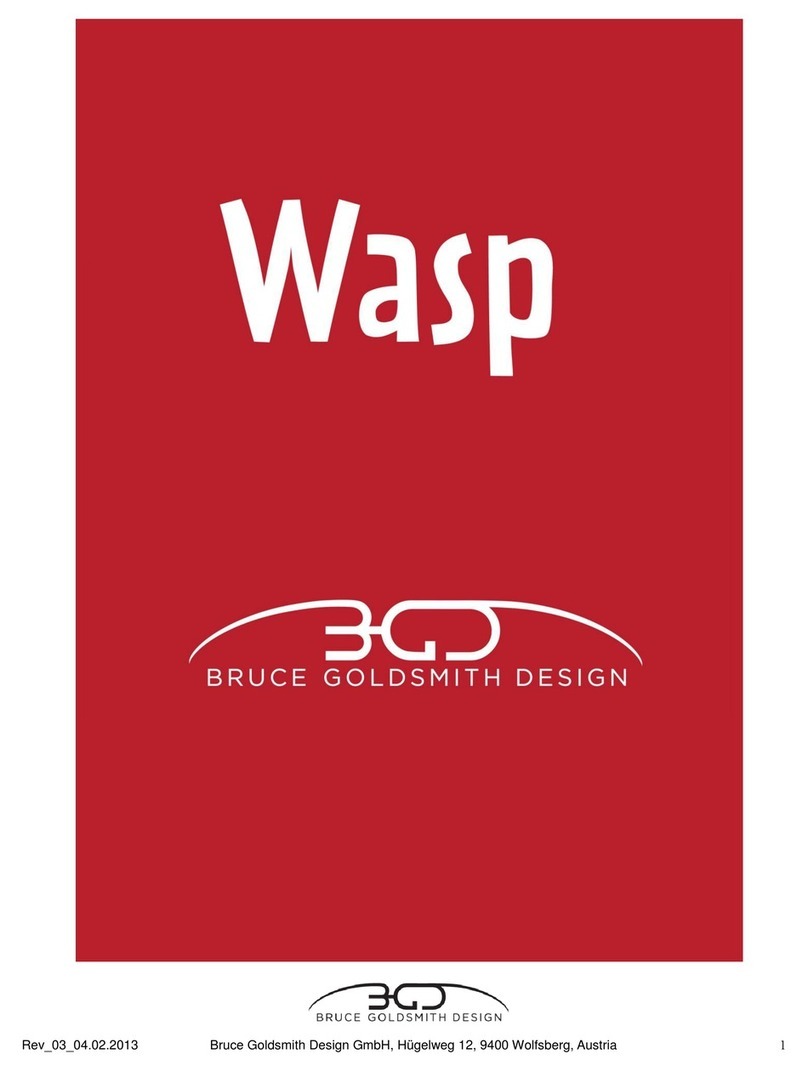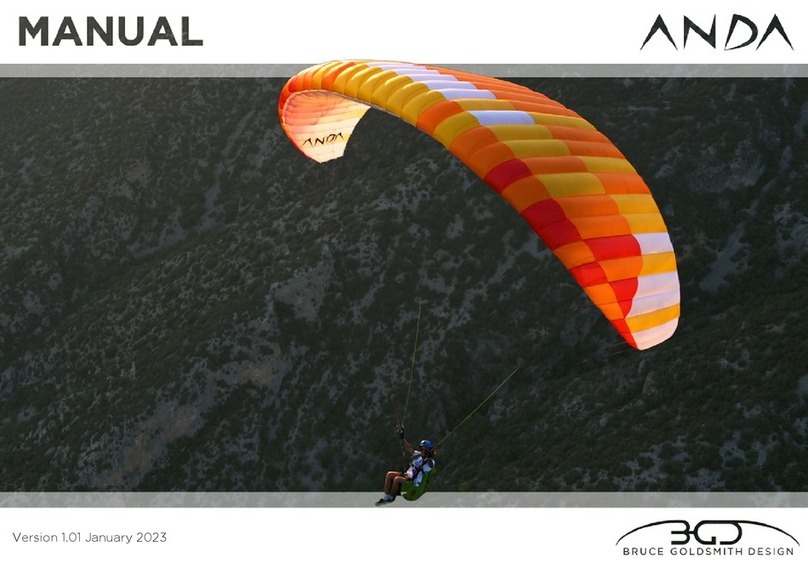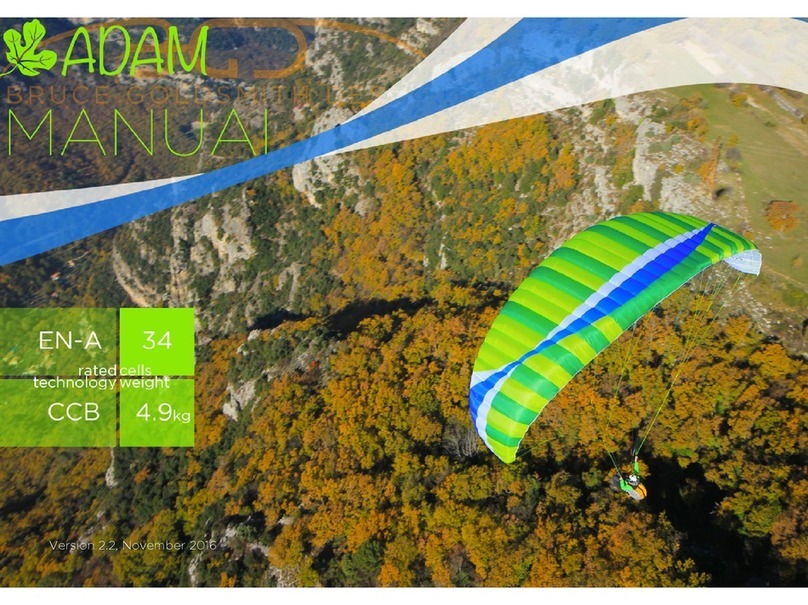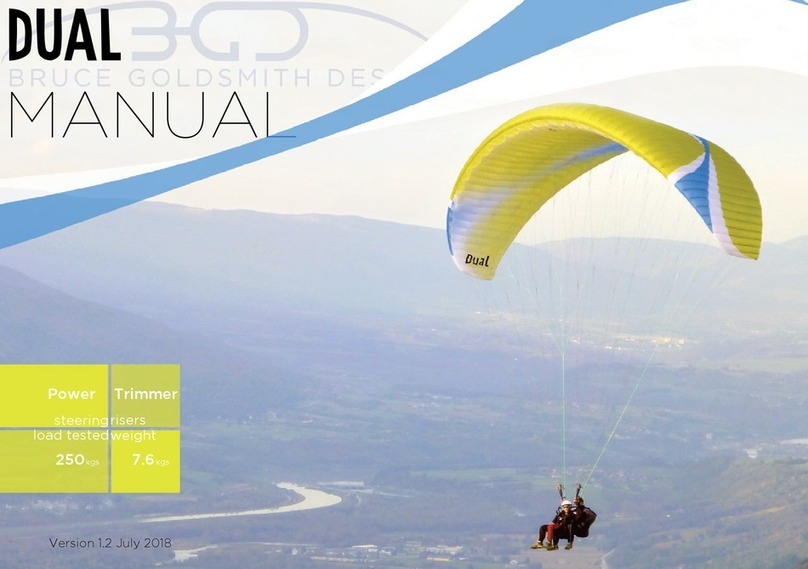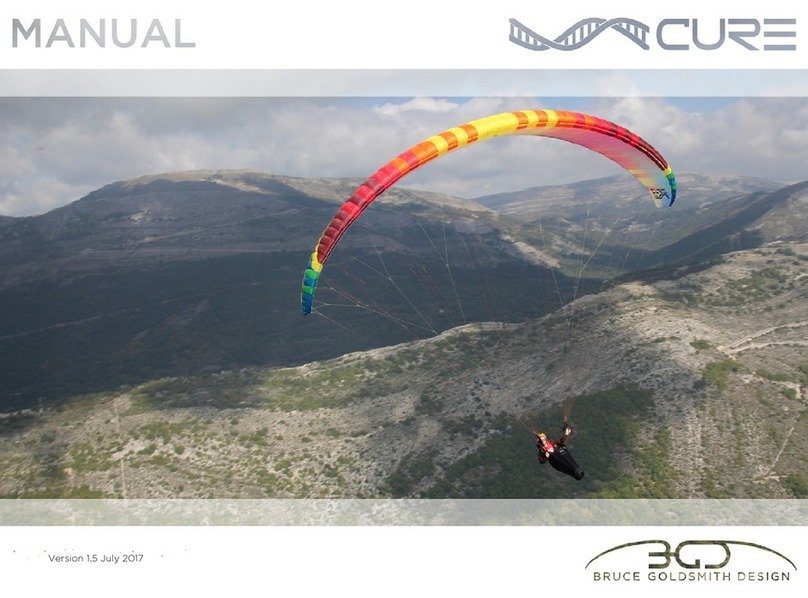
10
Version 1.2 June 2018
points. If they are showing signs of wear, the trimmers should be replaced. This can be done by the pilot.
Turning
The rst turns should be gradual and progressive. The rst action to change direction should be the movement of your
weight in the harness towards the side of the intended turn. Then gently relax the pressure on the outer brake, and
gently apply pressure to the inner brake until you attain the desired bank angle. To adjust your speed and turning-circle
size, coordinate your weightshift with pressure on the outer brake.
Remember that to violently apply pressure on the brakes is dangerous and should be avoided. Never initiate a turn if
you are ying slowly, as you risk the glider entering a spin.
Landing
Set the trimmers to the closed position and set up your approach downwind of the landing eld. When your height
above the eld is around 40m and you are in a good position to land in your intended landing spot, switch the engine
off* and make your nal approach, keeping your hands up to keep plenty of energy in the wing until you are about a
metre above the ground. Flare, braking slowly and gradually to slow down the wing until you are close to the stall-
point and able to land on your feet.
*If you land with the engine running there is a considerable risk of rotational propeller damage, (lines passing through
the propeller, or even injury).
Active Piloting
Active piloting means ying in empathy with your paraglider. This means not only guiding the glider through the air
but also controlling the movements of the wing, especially in thermals and turbulence. If the air is smooth the wing
does not need much input from the pilot, but in turbulent air a continual action of the pilot on the brakes and in the
4. Flight Characteristics

